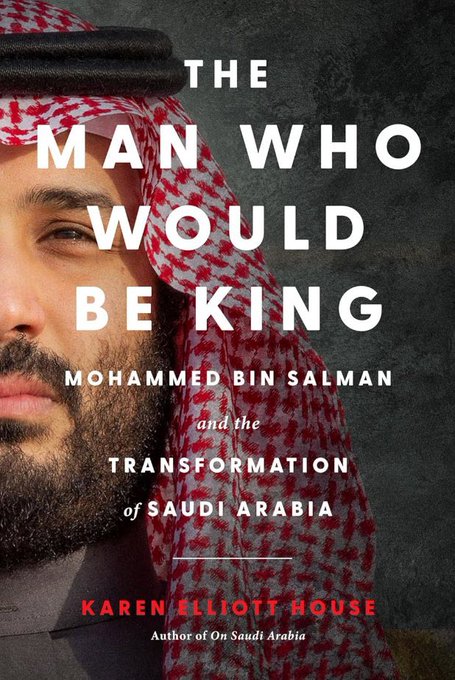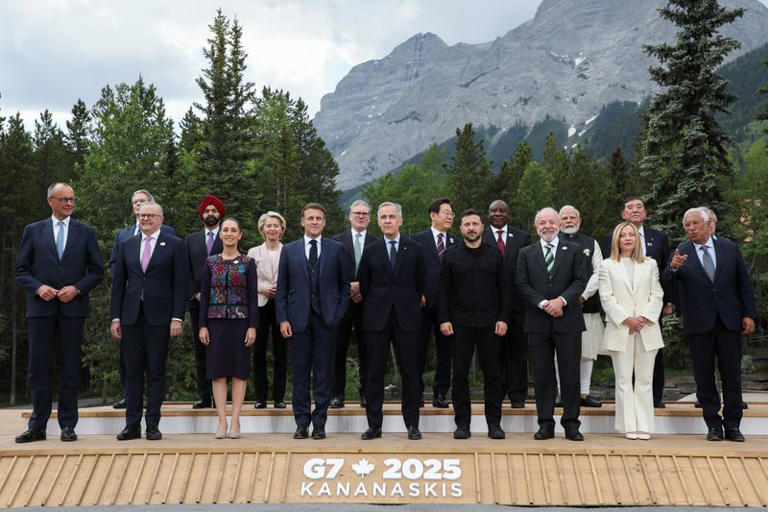


It was reported last night that President Trump held a quiet meeting with Saudi Arabia Defense Minister Prince Khalid bin Salman in the White House Thursday. This meeting is reported to cover discussions around de-escalation with Iran, the conflict in Gaza and what comes next.
The meeting also comes on the heels of President Trump having a phone call with Russian President Vladimir Putin and work throughout the middle-east region by President Trump Emissary Steve Witkoff and Israeli Strategic Affairs Minister Ron Dermer.
(Via Fox News) Saudi Defense Minister Prince Khalid bin Salman secretly met with President Donald Trump and other key officials in the White House on Thursday to discuss de-escalation efforts with Iran, multiple sources confirmed with Fox News.
Khalid, also known as KBS, is the younger brother of Saudi Crown Prince Mohammed bin Salman.
[…] The talks were also reportedly about ending the war in Gaza and negotiating the release of the remaining hostages – whether dead or alive – and about working toward peace in the Middle East. (more)
Previously it was reported by Israeli media that President Trump was working on a comprehensive solution to Gaza that would encompass peace in the middle-east by normalizing ties with Israel, isolating Iran and giving them fewer options for regional instability. Expanding the Abraham Accords provides the diplomatic vehicle for this approach.
Prime Minister Benjamin Netanyahu will visit the White House on Monday, July 7th.
It is strongly rumored that Syria and Lebanon would soon join the Abraham Accords, with the possibility of Saudi Arabia joining thereafter. Saudi Crown Prince Mohammed Bin Salman (MBS) is a key figure hoping to bring a new era to the middle east absent of conflict and focused on prosperity.
According to Israel Hayom, there was a 4-way call (Trump, Netanyahu, Rubio, Dermer) after the Iran strikes. President Trump and Benjamin Netanyahu agreed to “fundamental principles in general terms” including:
♦ “Gaza hostilities will conclude within two weeks.” ♦ “Four Arab nations (including Egypt and the UAE) will administer the Gaza Strip, replacing the murderous Hamas terrorist organization.” ♦ “The remaining Hamas leadership will face exile to other countries (possibly Qatar and Turkey), while the hostages gain freedom.” ♦ “Multiple nations globally will accept numerous Gaza inhabitants seeking emigration.” ♦ “Abraham Accords expansion will bring Syria, Saudi Arabia, and additional Arab and Muslim countries to recognize Israel and establish official relationships.” ♦ “Israel will declare its willingness for future Palestinian conflict resolution under the ‘two states’ concept, contingent upon the Palestinian Authority reforms.” ♦ “The United States will acknowledge limited Israeli sovereignty implementation in Judea and Samaria.”
Saudi Arabia was previously on the cusp of signing up to the Abraham Accords, but retreated from the agreement when the Israeli-Hamas war erupted within Gaza. It would not be surprising to see them come back to that agreement with President Trump’s guidance and request.
If we think about the status of Syria, we can clearly see how President Trump has enticed the new Syrian government led by Ahmed al-Sharaa to the peace table based on economic benefits (sanctions removed). In fact there are large billboards all over Tel Aviv thanking President Trump for his efforts in the embattled nation. It is rather remarkable.
Put all that together, and yes there are significant indications well beyond the report by Israel Hayom that something rather remarkable is possible within the middle-east and specifically as they relate to Israel.
With Iran now effectively removed from their ability to antagonize the region, and with President Trump as the enforcer to stop their extremist tendencies, the path toward regional peace seems much more likely. This opens the door for a new era in mid-east politics.
 (VIA WSJ) – […] Ms. House compares MBS to the 17th-century Russian czar Peter the Great, and the comparison is apt. Both men are best understood as modernizing autocrats, driven to shake up traditional societies and so enable them to withstand the competition and stress of a rapidly changing geopolitical scene. Like Peter, who built St. Petersburg to serve as Russia’s bridge to the West, MBS hopes that his new city—known as Neom—will make Saudi Arabia a dominant force in technological innovation. And like Peter, who asserted political control over the Russian Orthodox church and personally shaved the beards of aristocrats resisting modernization, MBS has ruthlessly imposed his vision on both religious and tribal leaders skeptical of change.
(VIA WSJ) – […] Ms. House compares MBS to the 17th-century Russian czar Peter the Great, and the comparison is apt. Both men are best understood as modernizing autocrats, driven to shake up traditional societies and so enable them to withstand the competition and stress of a rapidly changing geopolitical scene. Like Peter, who built St. Petersburg to serve as Russia’s bridge to the West, MBS hopes that his new city—known as Neom—will make Saudi Arabia a dominant force in technological innovation. And like Peter, who asserted political control over the Russian Orthodox church and personally shaved the beards of aristocrats resisting modernization, MBS has ruthlessly imposed his vision on both religious and tribal leaders skeptical of change.
[…] While earlier rulers took small steps to wean the economy from oil, MBS believes the time for half-measures has passed. Saudi Arabia, as MBS grasped years ago, cannot live by oil alone. But to lessen its dependence on oil, the social contract between Saudi citizens and their government has to change. New sources of revenue, like tourism, will have to supplement oil wealth. New industries, like data centers, will need to be welcomed into the kingdom, and new cities to house them will either have to grow from existing ones or, like Neom, be invented.(more)
If you think about the geopolitics behind much of the global conflict you may identify the U.S, U.K and EU as the historic source of influential instability. In the big picture BRICS was created as an economic hedge against this troubling influence, an alternative alignment of partners.
With U.S. President Donald J Trump challenging and changing the objectives of the ‘western alliance’, and indeed fracturing the western trade markets and the underlying economics therein, a new picture begins to emerge.
A strategic USA political and economic realignment based on peace, growth and independent stability, can unite America, Russia, Saudi Arabia and many emerging economies. However, the old financial guards within the UK, EU, Japan, Canada, Australia will likely fight this geopolitical shakeup.
All of that said, the ‘old guards’ biggest weapon to fight back against a global economic and peace realignment would be their control over the western-developed intelligence networks.
Is that the dynamic we have been seeing?
When contrast against visible recent events, that is a very interesting question to ponder.
Hence, President Donald Trump’s departure from this picture is almost allegorical. Remember, President Trump departed the G7 in Canada just before this entire ‘western-aligned’ crew showed up.

